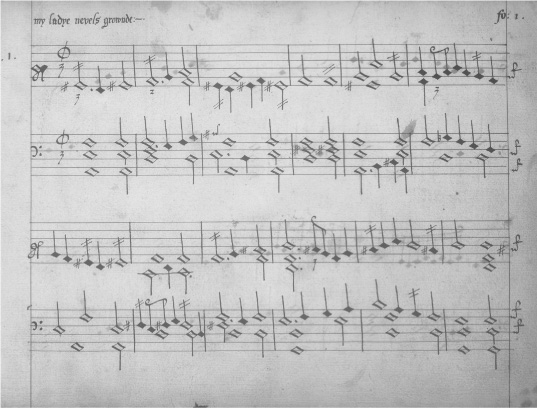

WILLIAM BYRD’S WORKS FOR KEYBOARD
When the composer William Byrd died in 1623, the tributes paid to him went far beyond speaking respectfully of the dead. He was described as the ‘parent’ of British music or, as the records of the Chapel Royal put it, ‘a father of musicke’. In life, he had been treated with scarcely less reverence. Despite making no effort to conceal his Roman Catholic faith at a time when it was dangerous to profess it, he escaped serious punishment. Queen Elizabeth I was among those who protected him from her own laws.
In truth, Byrd was not the first British composer to gain a reputation in his own lifetime, nor was he the progenitor of the country’s distinct musical traditions, but rather the first Englishman to master the new sounds of Renaissance music. In doing so he produced music that bore comparison with the great continental composers of the period, Palestrina and Victoria, and influenced the sounds of native music-making in the century that followed.
England had already produced a musical genius of the previous generation in Thomas Tallis (c.1505–85). Tallis concentrated on liturgical music, most famously his Lamentations of Jeremiah for five voices and the forty-voice motet, Spem in alium, one of the masterpieces of polyphony, in which separate melodic lines are concurrently sounded by two groups of twenty singers. Born around 1543, Byrd was Tallis’s pupil before joining him as joint organist of the Chapel Royal. As with so many subsequent British composers, this appointment within the royal household brought with it not only prestige but state favour. In 1575, Tallis and Byrd went into business together, gaining from Queen Elizabeth a twenty-one-year monopoly to publish all printed music in the realm. In the process, they virtually created the country’s music publishing trade.
Nonetheless, it was for a hand-annotated manuscript that Byrd’s finest works for keyboard were collated. The anthology, My Ladye Nevells Booke, was produced in 1591, probably for Elizabeth, the wife of a Berkshire landowner, Sir Henry Nevill. She may have been one of Byrd’s patrons. However, as only two of the compositions are specifically dedicated to her, it is possible that she was one of his pupils and the anthology is a collection of her favourite pieces. Byrd wrote extensively for the virginal, a smaller version of the harpsichord, which was a particularly popular instrument among female players. In all, My Ladye Nevells Booke contains forty-two works. These include dances – most of them pavans and galliards – and variations based on such contemporary folk-tunes as ‘The Carman’s Whistle’ and ‘Will Yow Walke the Woods soe Wylde’. The manuscript was produced by John Baldwin of St George’s Chapel, Windsor. The corrections, however, are believed to be in Byrd’s hand.
1499 Oxford University awards music degrees.
1560 Thomas Tallis composes the Lamentations of Jeremiah.
1568 The first primer for the lute is published.
1570 Tallis composes his forty-part motet, Spem in alium.
1575 Tallis and William Byrd jointly publish a motet collection, Cantiones Sacrae, and Elizabeth I grants them both a twenty-one-year monopoly on all music printing in England.
1580 The first mention of the ballad ‘Greensleeves’ appears.
1588 Nicholas Yonge’s publication of Musica Transalpina popularizes Italian madrigals in Britain.
1588 Byrd publishes Psalms, Sonnets and Songs of Sadness and Pietie.
1589 Byrd publishes Songs of Sundrie Natures.
1591 Byrd publishes his anthology My Ladye Nevells Booke.
1594 Elizabeth I sends a Thomas Dallam organ to the Ottoman sultan.
1597 The publication of John Dowland’s First Book of Songes or Ayres and Thomas Morley’s A Plaine and Easie Introduction to Practicall Musicke.
1598 The twenty-one-year monopoly to publish music passes to Thomas Morley.
1600 Thomas Morley’s First Book of Ayres is published.
c.1610 The Fitzwilliam Virginal Book is published, a treasure-trove of keyboard music.
1611–12 Parthenia is published, with keyboard works by John Bull, William Byrd and Orlando Gibbons.
1612–13 Orlando Gibbons’s First Set of Madrigals and Motets of Five Parts is published.
1623 Gibbons is appointed organist of Westminster Abbey.
1649 The Welsh-born Thomas Tomkins writes the Royalist lament Sad Pavan for These Distracted Times.

The music of ‘My Ladye Nevell’s Grownde’, the opening piece of William Byrd’s keyboard anthology My Ladye Nevells Booke.
Byrd’s music stood out not only for its quality but for the versatility of the composer. Over the course of his life, he produced a huge corpus for virtually every major medium apart from the lute. He was as adept at writing popular songs as he was at producing sacred choral music and was an innovator of verse anthems as well as a master of contrapuntal composition. He described his own ability to match music for words: ‘There is a certain hidden power in the thoughts underlying the words themselves, so that as one meditates upon the sacred words and constantly and seriously considers them, the right notes, in some inexplicable fashion, suggest themselves quite spontaneously.’ He wrote Latin religious music for Catholics as well as English settings for the Prayer Book (despite his Roman beliefs), which proved highly influential, resonating throughout the Anglican liturgy long after his death. Perhaps, though, the most touching epitaph appears at the end of the fourth galliard in My Ladye Nevells Booke. There, John Baldwin, unable to contain his excitement appended a simple observation: mr. w. birde. homo memorabilis.